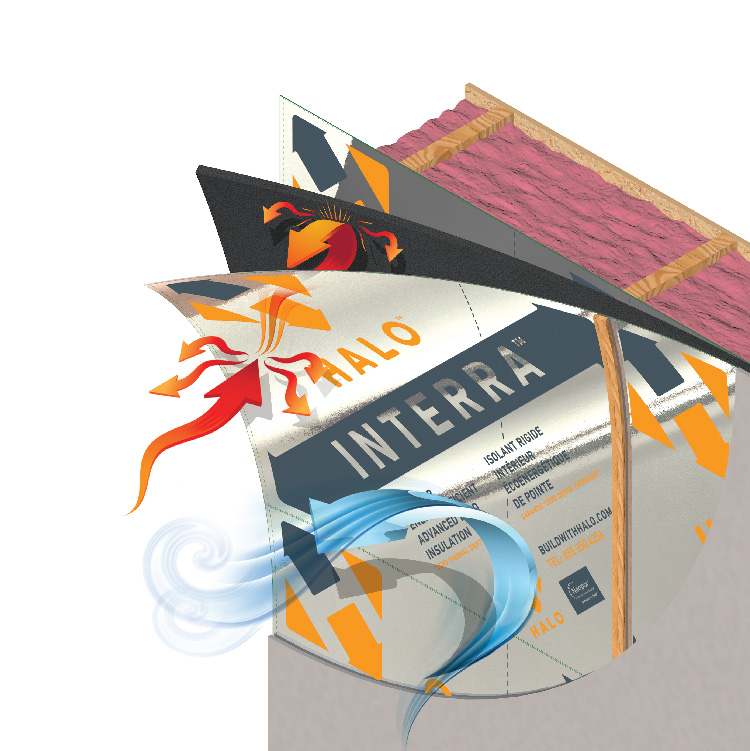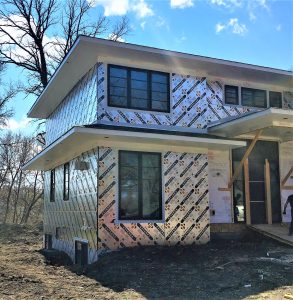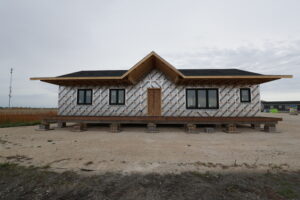Unless you’re a construction pro, you may be forgiven for thinking that all insulation products are made equal. They’re not.
In this post, we discuss the many uses and benefits of foam board insulation: a strikingly handy, high-performance product. Read on to find out more!
What Is Foam Board Insulation?
Also known as “rigid “or “continuous”, foam board insulation is made of a dense foam core and maybe laminated on either side. Unlike the fiberglass insulation found in most homes’ stud walls, foam boards provide continuous protection from the elements. Thanks to their density, they typically also have higher R-values per inch.
Because of their lightweight, durability, and convenient dimensions of 2’x8′ and 4’x8′, foam boards are simple to use. Most panels range between 3/8″ and 2.5″ in thickness, though other dimensions and thicknesses are usually available through custom order.
Not Your Father’s Rigid Insulation
While rigid panels have kept buildings warm for ages, today’s leading products are not your father’s foam board insulation. Modern foam boards can do a lot more than block heat transfer; they can also control the flow of vapor and moisture and keep the wall cavity dry. By adjusting the combination of laminate and foam core, these panels can be tailor-made to suit almost any building application.
Common Types of Foam Cores
Expanded Polystyrene
Better known as EPS, is the least expensive among today’s foam board products.
Because its blowing agent is air, EPS is made with a trivial amount of embodied carbon compared to Extruded Polystyrene (XPS) products.
EPS boards offer about R4/inch in thermal resistance, which is the lower end of the range among similar products. That said, EPS is less prone to deterioration, so its R-value is stable over time.
Graphite Polystyrene
GPS, consists of EPS foam infused with graphite particles. The latter beef up the foam’s R-values to about R-4.7/inch. As with EPS, the R-values are stable, and the risk of deterioration is low. Despite having a similar production process to EPS, GPS foam has a lower embodied carbon content. Thanks to all their added benefits, GPS products cost somewhat more than their EPS peers, though often significantly less than XPS.
Extruded Polystyrene
These panels offer a comparable thermal resistance to that of GPS at R-4.7/inch. That said, the product deteriorates over time, so the R-values don’t last forever.
XPS boards typically cost the most and pack the highest amount of embodied carbon. That’s because of the blowing agents used in their production, HFC-134a, and HFC-142b, which harm the atmosphere a staggering 1,420 and 2,310 times more than Carbon Dioxide.
Common Types of Laminate
Basic Unperforated
With unperforated lamination, when seam taped, foam board panels act as a code-compliant vapor barrier. The laminate coat gives these panels extra strength, making them less prone to damage on the job site.
Perforated
An apt choice for exterior use, foam boards with perforated laminate breathe well and help the wall behind them dry to the outside. That said, a perforated laminate coat cannot act as a barrier.
Reflective
With reflective laminate and an air gap on the warm side, foam boards can reflect heat into a room. This potential boost in thermal resistance makes reflective laminate a fitting option for interior use.
Cross-woven
The cross-woven fibers strengthen the laminate and keep the foam core safe. Foam boards with cross-woven laminate are ideal for under-slab use, as they can take a lot of beating and handle heavy job site traffic without breaking.


Don't miss a thing!
Subscribe for exclusive content, insider industry news and limited edition webcasts.
When to Use Foam Board Insulation
Foam board insulation is versatile in its use. Below grade, it’s a handy way to protect slabs when you expect great soil pressures and heavy loads. On the warm side of a wall, it does wonders to keep out moisture, notably in locales with a high water table. On a wall’s exterior, a quality foam board product with perforated laminate will help curb thermal bridging while letting the wall assembly breathe and stay dry.
How to Use Foam Board Insulation
In most cases, installing foam board insulation is simple and straightforward. You can cut the panels to size with a circular saw or a utility knife, then set them in place with an adhesive, or screws and washers. Just keep in mind that if you need the panels to act as a vapor or moisture barrier, be sure to tape all the seams.
Where to Buy Foam Board Insulation
Foam Board Insulation is widely available in North America, and most building materials dealers should have it in stock. Visit your local shop to see if it has a product that works for you.











